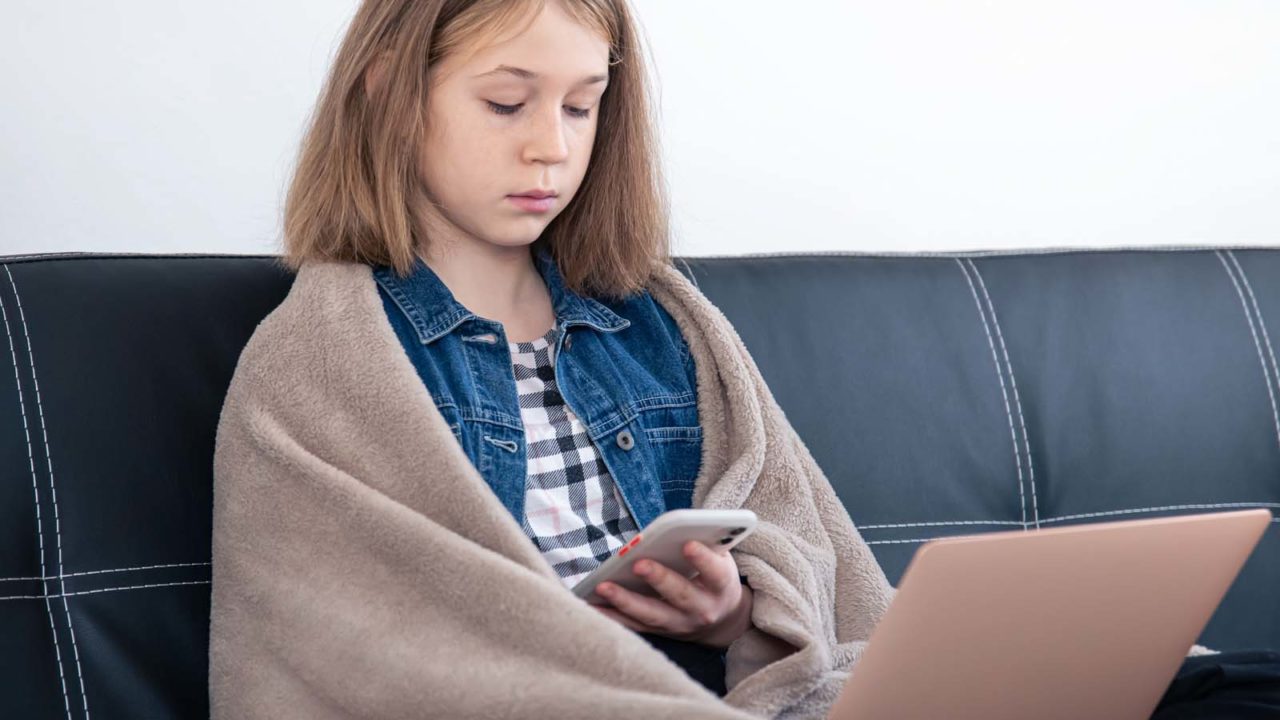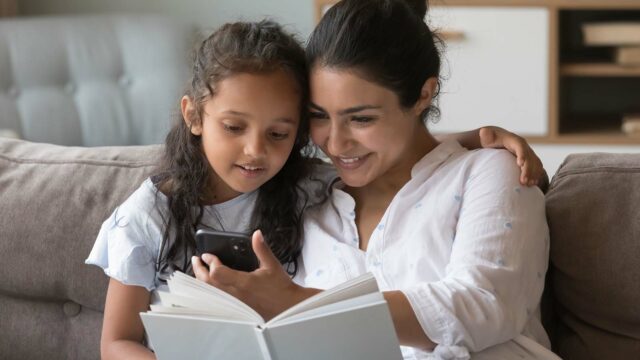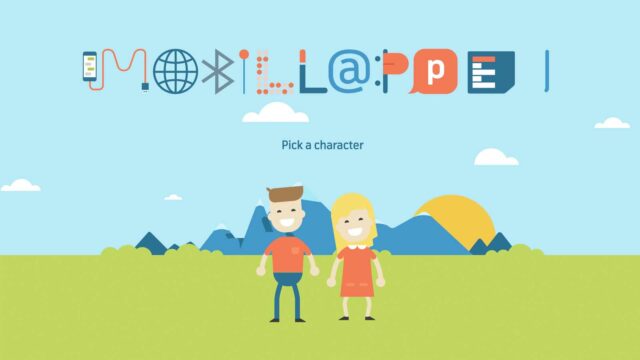
Children may watch terrifying news and propaganda from the war in Ukraine
TIPS AND ADVICE FOR PARENTS: With Russia's invasion of Ukraine, it may be good to have an age-appropriate conversation with your children about war news. Gruesome videos and propaganda may appear on children's phones.
Choose language in the Google-box below. Some translations may be flawed or inaccurate.
(First published in Norwegian on 25 February 2022. Translated by Ratan Samadder)
These days, children of all ages are getting news of Russia’s war against Ukraine. TV channels are broadcasting war news for hours every day. Moreover, children can watch the war around the clock on their own phones – alone.
The Convention on the Rights of the Child states that children have the right to be protected from harmful media content. At the same time, it says that children have the right to get information about the world. These two rights must be weighed against each other. The youngest children should have the greatest news protection.
Information about the war should be adapted to the age and maturity of the child. Of course, this is challenging when your kids have their own smartphones.
Social media may show horrible pictures
Keep in mind that in social media, there is no editorial staff to remove the dreadful images. The video clips on social media can therefore be more frightening than what children can see in the traditional press.
Social media also believe that your nine-year-old is at least thirteen, due to the terms and conditions, and does not necessarily consider shielding younger children with filters.
Propaganda and fake fundraisers
Tell the children that when there is a war, there is also a lot of fake news, the video clips may originate from completely different wars several years ago, or the allegations might be propaganda. The fake news may appear in the usual channels such as Tiktok.
Fake fundraising will also appear for helping the victims in Ukraine. Some of these might look like a live broadcast, but then it’s actually a movie playing in a loop. If you are going to donate money, it is safer to use well-known organizations. Just make sure you’re on the real site if you’re going to donate.
New house rules for a while?
One solution for the child to be less intimidated is that the child has to take a longer break from social media, but it is enough to exaggerate if the child uses social media in an isolated and narrow way already, perhaps the child only chats with a few friends and does not see features from foreign users.
Parents should therefore familiarize themselves with the apps children use, how they use those, and how the settings are, and of course, take into account the child’s age.
If your child tends to see features from other users, you can talk about how to avoid war videos, i.e., not searching for features using tags that show videos and photos from the war. It’s about not feeding the algorithms; they catch the child if he or she stops for a little while at a war video and maybe watch the video twice. Algorithms interpret that the child would like to watch more war videos.
A survey from Australia in 2021 showed that the algorithms react quickly if you search for something negative. The child may end up in a spiral where the algorithms show more and more from the war.
If the app includes a “no thanks to more videos like this” button, ask your child to use that button more often.
You can also encourage your child not to spread further frightening elements to his or her friends.
A prudent use of the media is also in place. It is good to take a break from the war news every now and then.
If there is too much war news in the child’s app, and the child is characterized by poor sleep or the like, an option is to use a more child-friendly social app for a while. For example, the app Signal does not contain editorial features, but then in that case the friends must use the same app for everyone to be able to chat.
News made for kids
There are also news channels for children, such as Framtida Junior and NRK Supernytt. Feel free to watch the news with the children so that you can explain.
Listen and let children tell
It is important that the children themselves put into words what they see and hear, they may have picked up more about the war than their parents think. Then it’s nice that adults listen to what the children are telling. To process the stark impressions, let them draw things they have seen on the news.
Tell them about the good news
Show the children also positive news. There are many who want to help or support Ukraine. Some are working for raising money, aid crews are making efforts, and so on.
Questions from the children
Get ready to answer questions from your children:
- May the war come to Norway?
- Why has Russia started the war against Ukraine?
- Who is Putin?
- What is NATO?
- What is the EU?
- What are sanctions?
- Do people die in the war?
- What is Norway doing to help Ukraine?
- Will there be refugees in Norway?
Children usually want short answers, not long lectures.
A common piece of advice is that the youngest children need first of all safety, you need to explain why Norway is considered safe. The slightly older children also need to understand the full picture.
The Crisis Psychology Clinic in Bergen provides tips and advice on what to say to the children regarding Ukraine.
Barnevakten’s tips – summarized
- Listen to the children and talk to them about the war
- Provide new guidelines for media use, if necessary
- Protect the youngest from strong impressions
- See personalized news with your older kids
- Encourage media breaks from the war
- Avoid war tags
- Don’t share war videos
- Beware of propaganda
- Feel free to use the parental settings in your apps more actively
Read more articles here.









